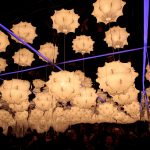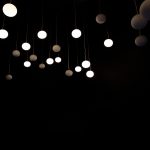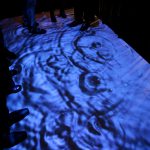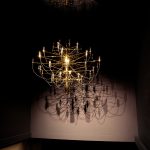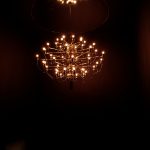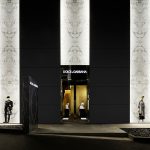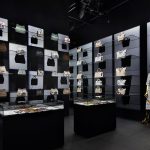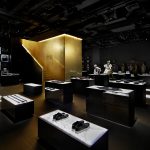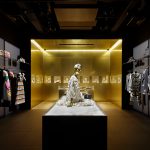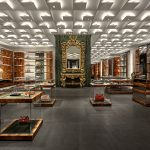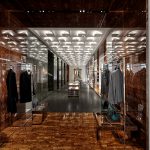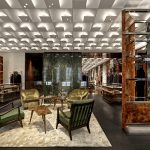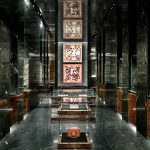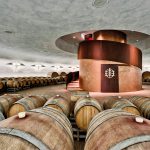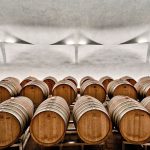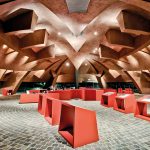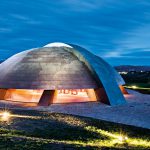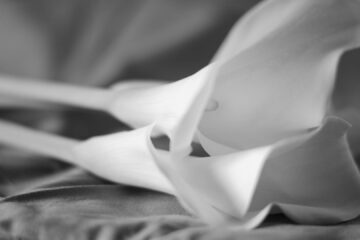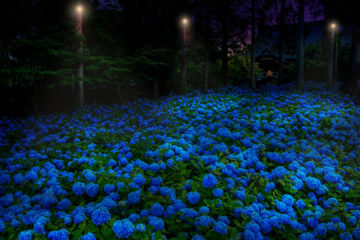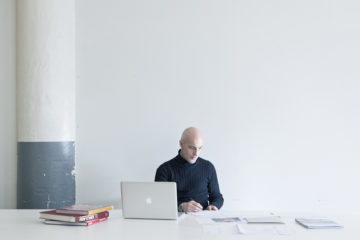
バルバラ・バレストレリ氏(ライティングデザイナー)
Barbara Balestreri, Lighting Designer
– Euroluceを見る際のポイントを教えて下さい。
ミラノサローネと同時開催されるEuroluceは「デコラティブ」、フランクフルトで開催されるlight+buildingは「テクニカル」と、それぞれの役割が分担ができてきました。どちらも見逃せないイベントですが、Euroluceにおいては展示会場だけではなく、特に市内のFuorisalone(インスタレーションイベント)は必ずチェックして欲しいです。展示会場ではなく、市内でのみ発表を行っている企業もありますし、Fuorisaloneでは、どのように新しい技術が使われているのか、新しい使い方などをインプットするために有効であると思います。
Could you tell me something we should remember when viewing EUROLUCE?
Euroluce (decorative) and light + building (technical) are now recognized as two of the most important lighting industry exhibitions that are worth seeing but please do not miss the special events of Euroluce, especially Fuorisalone, that take place in the city center. There are companies exhibiting there only, therefore it would be useful to check them out to learn new technology is being used.
– 注目しているブランドはありますか?
まず「WONDERGLASS」です。彼らは装飾的な光を作り、ムラノガラスを使用して新しいプロジェクトに挑戦することで有名です。 今後、私は彼らとのコラボレーションを予定しています。
そして「FLOS」です。Euroluce 2017のFLOSスタンドでは、EUROSHOP(ドイツ)で発表したソリューションの一部を展示しています。それは、高い位置に設置されたスポットライトを動かしたり調整することが難しいという課題に対して、iPadを使ってスポットの照射方向を変えたり、レール上でスポットライトの位置を移動することのできる遠隔操作と連動したシステムの提案です。
私がスタンドのデザインを依頼された時、この独特の技術的アプローチは非常に有効だと考えました。しかし、そこで、単なる機能的な課題を解決するソリューションとしての発表、つまり遠隔で動かせるという解決策に加えて、もう一歩先へ踏み出し、異なるシーンを演出できるところまで提案することを考えました。通常スポットは彫り込まれたレール内の見えないところに設置されていますが、遠隔操作によって、顔を出し、対象となるオブジェに光をあてる、という演出操作ができます。
Is there any company you are particularly interested in?
WONDERGLASS: They are famous for creating decorative light and challenging new projects with Murano glass. I have been planning to work together with them.
FLOS: I worked with them when they exhibited for EUROSHOP. The challenge was to how to produce an interactive environment and I was thinking to create some movement. In the end, we set up emotional and dynamic lighting by making lighting products movable. In Euroluce 2017, FLOS announced a distinctive technical approach by expanding parts of previous designs in EUROSHOP. They developed a remote control system controlled by iPad to adjust the spotlights that enable us to change direction or move product on a track.
However, they took further steps so that the lighting system was to be able to provide different scenes, not just proposing a solution to making lighting move remotely. This system can actually position lights to spot objects.
– 良く採用するブランドはありますか?
FLOS、KKDC、DGA、Viabizzunoなどに特殊照明を依頼する事が多いですね。
Are there any brands you often work with?
I frequently use companies such as FLOS, KKDC, DGA and Viabizzuno to my projects(?).
– 装飾的な照明は、そのカタチで評価される傾向があると思います。建築照明は躯体があって光が成り立ちますが、装飾的な照明は空間に光を浮かせる事ができると考えています。そのような観点でエルデコのインスタレーションを拝見しましたが、カタチがはっきりと見える場合、それがより魅力的であるということを改めて認識することができました。どのようにこのアイデアを思い浮かべましたか?
このプロジェクトでは、著名なプロダクトをどう発表したら良いのか?どのように演出するか?という観点で考えました。
ただ、その方法を発想することはそれほど難しいことではありませんでした。光の作品を再利用してインスタレーションを実現するというコンセプトは、私にとっては、とても自然な発想だったのです。技術は単なる道具ですが、光は感情と芸術を結びつけることができます。アーキテクチャでは、さまざまなイメージを強化するための技術者のアイデアをサポートしています。
もう一つのテーマは、装飾的な光から技術的な光へと移行を示す住宅、ホテル、ラウンジなどのホスピタリティ空間です。私が最近注目しているのは、光を静的な状態で使わないこと。つまり、ダイナミックで、インタラクティブな光を作り出すことです。このインスタレーションでも、アイロニックなアプローチで、光とのインタラクションを喚起させる仕掛けを考えました。インスタレーションでは4つのゾーンを作りました。
- Atmosfer Light「あなたが望むものを体験する」|人の動きにより光と雰囲気が変わる(FLOS – アッキーレ・カスティリオーニ)
- Dynamic Light 「あなたの夢が体験をつくりだす」| 照明器具と映像の連動により雫が落ちる様を演出(FLOS – ジャスパー・モリソン)
- Personalized light「あなた自身が体験をつくりだす」| ミラーのギミックでシーリングがテーブルに(FLOS – フィリップ・スタルク)
- Scenographic light「あなたが感覚が体験をつくりだす」|光により照明器具がオブジェへと変わる(FLOS – ジノ・サルファティ)
- Atmosfer Light 01
- Atmosfer Light 02
- Dynamic Light 01
- Dynamic Light 02
- Personalized light 01
- Personalized light 02
- Scenographic light 01
- Scenographic light 02
I think decorative light tends to be evaluated by their shapes. Architectural lighting is subordinate to its structure, but deorative light is free from structure and can be floated in space. I could reconfirm the fact that if the shape of something is clearly visible, it can be more attractive. I was thinking this all the way through your installation work at ELLE DECO. How did you conceive of this idea?
It was quite natural that I realised that work, in terms of how to exhibit the masterpiece. Technology is just a tool but light is more than that, it can make a connection between emotions and art. In architecture, it supports engineer’s idea to enhance their variety of images.
Another theme is hospitality spaces such as houses, hotels and lounges that illustrate a shift of decorative light to technical light. What I have recently focused on most is the absence of light in a static environment, that is to say, creating dynamic and interactive light. As you see my aim in this work, looks slightly ironic but I wanted to produce interactions with light.
I would like to add little bit more about this installation. There are four areas expressed…
- Atmospheric light ‘Experience what you want’ |We move, light changes (Flos – Achille Castiglioni)
- Dynamic Light ‘Experience your dream’ |Drips created by the interaction between the lighting fixture and movie (Flos – Jasper Morrison)
- Personalised light ‘Experience who you are’ | Mirror remarkably changes sealing light into table light (Flos – Philip Stark)
- Scenographic light ‘Experience what you feel’ |Fixture changes into art work (Flos – Gino Safatti)
– 影響を与えたものは何ですか?
谷崎潤一郎の「陰影礼賛」には非常に影響を受けました。また、私たちイタリア人には、芸術と建築の歴史があります。特に光は、その中で解釈されて使われており、大きな指針となっています。学位論文には「建築とアートにおけるシンボルとしての自然の光」をテーマに書きました。ベルニーニやカラバッジョといった光を描いた巨匠達の作品からも影響を受けています。
What has influenced your work?
Well I was very much influenced by ‘In Praise of Shadow’ written by Junichiro Tanizaki. We Italians have a long history of art and architecture and light has especially been interpreted and used as a guideline. My thesis was ‘Natural light as symbol on art and architecture’. I also draw influence from the works of Bernini and Caravaggio who depicted light.
– 代表的なプロジェクトを教えてください。
Studio Curiosityとのコラボレーションで進めている、東京とミラノの Dolce&Gabbana だと思います。これは Curiosity のグエナエル・ニコラ氏と進めている、プロジェクターを使った実験的な光のプロジェクトです。Curiosityとは、長年コラボレーションが続いていますが、Berlutiのコンセプトショップがきっかけになりましたが、その後も、Fendi-Romaなど、たくさんのショップを手がけてきました。
アートの分野では、例えば、ミラノ・レアーレ宮殿では、現在マネ展をやっていますし、これまでには北斎展、レオナルドダヴィンチ展などを手がけました。北斎展では、貴重な作品が一堂に会したくさんの人が感動する姿を見ました。また、パーティーの夕食会会場のライティングも手がけ、水のブルーを基調にして演出を行いました。一方、非常に難しかったのは、2年前に開催されたダヴィンチ展です。デッサン画が多く、ここではごくわずかな光量(50lux)しか使うことができないのですが、明るさという観点から、他の作品に比べ見劣りしないよう(明るさの差をつくらないよう)、作品の周囲に明るさを持たせる仕掛けとして、什器側に光のフレームの導入を考案しました。
また、現代彫刻家アルナルド・ポモドーロとのコラボレーションで開発した、イタリア中部ウンブリア州のワイナリーでは、彫刻が大きな建築に発展したような特性を持つプロジェクトで、非常に興味深いライティングデザインが生まれました。照明器具が目に見えないよう全て配慮されているのですが、彫刻に対する照明計画は、建築に対する計画とは全く異なるため、現場でたくさんの試作を繰り返しました。アーティストとのコラボレーションは、建築家とは全く異なる視点でのプロジェクト開発となり、5年ほどかかりました。
ミラノのポモドーロ財団のミュージアムも手がけました。私たちの現代美術に対するライティングアプローチは、これまで使われてきた手法と全く異なるものでした。それまでは、現代美術に対して、大きく拡散した光、蛍光灯を使うことが一般的だったのに対し、私たちは、カラバッジョの絵画やミケランジェロの彫刻のように、一つ一つの作品に対して照射するというアプローチしました。
他にも、イタリアに多く存在する教会や修道院はもちろん、ミラノにあるネッキ邸をはじめ、歴史的建造物の照明なども多々手がけています。
このネッキ邸の歴史的ロケーションを利用して、現在フランスの紙を使った企画アート展も開催されています。歴史的建造物では、壁面や天井、床への配線工事等に制限があることが多いため、建物に影響を与えないかたちで、どのようにオリジナルの空間の雰囲気を保ちながら、光を使うのかという観点で提案を考えています。
アートにおけるプロジェクトと、リテールプロジェクトの関係性は大きく、アート展において実験的に取り入れたデザインをリテールで応用することが多々有ります。最終的に、どのプロジェクトでも重要なのは、人を巻き込むことですが、アート分野のプロジェクトで培った経験は必ずどこかで活きています。
光もアートと捉えられます。エモーションをつくるツールのひとつです。ですから、技術は、ツールの一つにしか過ぎません。技術が変われば、現在も革新しつつありますが、それは利用しなければなりません。どのプロジェクトにおいても、情熱を持って取り組んでいます。価値は、輝きを放つ(光をあたえてくれる)と信じています。一つ一つのプロジェクトに、独自のストーリーがあります。複製したり繰り返し使うことはありません。
Could I ask you about a project which is representative of your work?
Well I think collaborative project with Studio Curiosity for Dolce & Gabbana in Tokyo and Milan. This is experimental project with Gwenael Nicolas (Curiosity) using a projector.
We have been working together for long time for lots of retail shops such as Fendi in Rome, since we met our first client, Berluti.
In the art industry, I have worked for exhibitions of Edouard Manet, Hokusai or Leonardo Da Vinci that have taken place at Palazzo di Milano. A large number of visitors were impressed by rare Hokusai’s works and what I did was create a performance of light having blue as base colour at Hokusai exhibition’s dinner party. On the other hand, the exhibition of Leonardo Da Vinci’s work opened two years ago became heavy-going. In particulary, the power of the lights for drawing we could use was regularly rigorously adjusted (only 50lux) so that I thought of introducing light frames as a system to avoid brightness differences from the other works.
Another interesting experience was the collaborative work with Arnaldo Pomodoro, who is a contemporary sculptor. Our project held at a winery in Umbria in the middle of Italy and was quite unique as his artwork was as close to architecture. It actually took five years to complete it. The Lighting of his sculptures required a completely different way of thinking, therefore it had to continuously be tested.
We also worked together for Arnaldo Pomodoro Foundation and we approached contemporary art differently. Diffused and fluorescent lights that can spread all over the area has been frequently used up until now but we illuminated each art work as Caravaggio and Michelangelo for their paintings and sculptures.
We have done more lighting projects for traditional churches and monasteries of course as well as other historic landmarks like Necchi House in Milan. There is currently an exhibition on French paper in this historic context of Necchi House. Especially there are technical regulations towards historic buildings, so it is essential considering the best situation for the spaces with special care how to reproduce original atmosphere.
Lastly, I often apply designs that has been developed experimentally to the retail industry because the relationship between art projects and retail projects is pretty strong. It would be important to always involve people and anyway the experiences from art industry would definitely work positive somewhere. However far technology progresses, it has to be used by some form and is just one of a number of useful tools. I strongly believe that light can also be important tool to be used emotionally and its value helps create a unique story for each project that should not be repeatedly used or copied.
2017.4.5 TOL STUDIO Interview
- DG AOYAMA 01
- DG AOYAMA 02
- DG AOYAMA 03
- DG AOYAMA 04
- DG MILAN 01
- DG MILAN 02
- DG MILAN 03
- DG MILAN 04
- Pomodoro 01
- Pomodoro 02
- Pomodoro 03
- Pomodoro 04
バルバラ・バレストレリ氏 プロフィール
バルバラ・バレストレリ・ライティング・デザイン(BBLD)代表
機能と美、コミュニケーションと価値、シェノグラフィーとしての光。
輝きを放つ光のストーリーをつくる ライティング・コンセプトの実現。
BBLDは、光に特化して、世界各国でのプロジェクトを手がけるライティング・デザイン事務所。リテールやアートを含む文化遺産におけるライティングデザインを中心に、カフェやレストラン、ラウンジ、プライベートハウス、さらに屋外では、庭や公園、アートインスタレーション、建物のファサードライトアップなども手がける。
代表であるバルバラ・バレストレリは、建築家であり、ミラノ工科大学にて自然光に関する卒業論文を手がけた後、1990年より屋内外のライティングデザイナーとして独立、2001年ミラノに事務所を構え、2003年より、ライティング・デザインを専攻した、約15名の建築、プロダクトデザイン、インテリアデザイン、エンジニアリング、演出各分野のライティングデザイナーとコラボレーターと事業を進めている。
世界各地で、著名な建築事務所とのコラボレーションを得ながら、様々なプロジェクトを手がけている。ファッション分野では、ジョルジョ・アルマーニ、ベルルーティ、セリーヌ、D&G、ダンヒル、フェンディ、ジバンシー、ジミー・チュー、モンクレール、トッズ、ベルサーチ、フルラなど。
アート・文化分野における主要プロジェクトとしては、ミラノ・レアーレ宮殿、トリノ近現代美術館GAM、ルッカ・ドゥカーレ宮殿、ボローニャ考古学博物館、ミラノ・ブレラ絵画館、ローマ・クイリナーレ宮殿、ミラノ・ポモドーロ財団。
また、BBDLは、長年にわたるイタリア環境財団FAIとのコラボレーションによる重要歴史文化財プロジェクトとして、ミラノ・ネッキ邸、カステルセプリオ・トルバ修道院、さらにイタリア各地の主要な美術館照明、展示会照明なども手がけている。
上記は一部に過ぎないが、光を単なる機能的要素として捉えるのではなく、コミュニケーション、付加価値、保管、美観、シェノグラフィー(演出)という観点から、光のシステムとしての実現を目指し、常設及び期間限定プロジェクトとして検討、開発を進めている。
Barbara Balestreri’s Profile
BBLD-Barbara Balestreri Lighting Design
BBLD Studio, founded by Architect Barbara Balestreri, is an architectural lighting design office, involved in the realization of original lighting concepts for diverse array of cultural and commercial projects around the world.
Barbara Balestreri began her professional career in 1990 as self-lighting designer. Since 2003 she collaborates with the Dr Lisa Marchesi, graduated in product design and specialized in lighting design, and a number of professionals including architects, product designers, interior designers and lighting designers.
With wide ranging experience in a variety of lighting projects worldwide and the collaboration with great international architects, BBLD Studio works for retail brands realized (Giorgio Armani, Berluti, Moynat, Cèline, Fendi, Jimmy Choo, Dunhill, Givenchy, Versace) and to interesting cultural site: temporary exhibitions, museums, churches, architectural, sculptures of Arnaldo Pomodoro.
Each project starts and develops, not as an unique element, but as part of the whole, be it a transient or permanent space, and as such provides the basis for the realization of a system in which light is not meant only as a functional element, but also as communication, enhancement, conservation, aesthetics, scenography.
